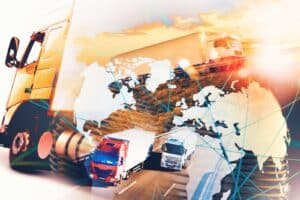What Is Tariff Engineering?
By Steven Lehat
Tariff engineering is the practice of structuring imports to legally minimize customs duties. This is achieved by focusing on two aspects of the Harmonized Tariff Schedule (HTS): product classification and valuation. For example, if a product valued at $1,000 falls under a 10% tariff, an importer owes $100. But by adjusting the classification or appraised value (legally), the amount owed in tariffs could be reduced.
Substantial Transformation Explained
Substantial transformation determines a product’s country of origin. This matters because different countries face different tariff rates. For instance, if components from China are assembled in Vietnam and undergo enough transformation to change their tariff code, Vietnam may be considered the country of origin—potentially reducing tariff rates. However, superficial changes like relabeling do not qualify and are illegal.
How U.S. Customs Evaluates Origin
U.S. Customs primarily uses the “double transformation” test, requiring a product to change classification twice—for example, raw materials to components, then components to a finished product. This helps determine whether a real manufacturing process occurred and a new product was created.
Other countries may apply alternative methods, such as single transformation or commercial identity shifts. For U.S. importers, however, the HTS and its interpretive rules are key.
Tariff Engineering in the Automotive Industry
The automotive sector is a complex case. A single car may have components from China, Mexico, and the U.S., making it crucial to determine the true origin of each part.
Under recent U.S. tariffs, Chinese-origin goods face higher duties. If auto parts are substantially transformed in another country, such as Mexico, and meet classification-shift standards, they may be treated as non-Chinese in origin. However, simple assembly is unlikely to qualify.
Valuation Methods & Strategic Planning
There are six recognized customs valuation methods. Importers cannot change valuation retroactively—it must be planned during contract and supply chain setup. Strategic decisions about purchase structures and sourcing should be made well before goods are shipped.
Managing High Tariffs
With tariffs rising as high as 25–50% in some cases, importers are taking action. Some absorb the costs or raise prices. Others reengineer supply chains through sourcing changes, legal tariff engineering, and new purchase strategies to reduce exposure.
Legal Boundaries and Compliance
While there used to be more room for interpretation, today’s tariff and origin rules are more rigid. The harmonized system offers clearer definitions, making compliance more transparent but also less flexible. Importers must align operations early and adhere to established rules to avoid penalties.
For more information about reducing your tariff exposure and substantial transformation, please contact us:
Contact Us & Landing Page
"*" indicates required fields


